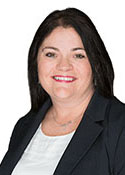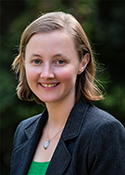Cunningham
Margin: Labor 11.9%
Region: Northern Illawarra, New South Wales
In a nutshell: Outside of a loss to the Greens at a by-election in 2002, the Illawarra seat of Cunningham has remained true to its blue-collar Labor profile since its creation in 1949.
Candidates in ballot paper order

|
CATH BLAKEY NATHAN WATERS MICHELLE BLICAVS MICHELLE RYAN SHARON BIRD JOHN FLANAGAN |
Cunningham covers the northern Illawarra region around Wollongong, the centre of which has been a feature of the electorate since it was created with the expansion of parliament in 1949. Wollongong had previously been in Werriwa, which Labor or Lang Labor had held for all but one term since 1919. Cunningham has likewise generally been safe for Labor, with the margin falling below 10% only in the landslide of 1966, and when it slipped to 9.9% in 2013. However, there was a brief interruption to Labor control after the Greens won the seat at a by-election in 2002, giving the party its first ever seat in the House of Representatives. There had also been a close call amid the blue-collar backlash against Labor in 1990, when the Australian Democrats came within 2.4% of victory. As redrawn by the latest redistribution, Cunningham extends northwards from Port Kembla and Illawarra through Bulli to Helensburgh in the north. Port Kembla has been acquired through a transfer of 8000 voters from Throsby, which is balanced by the transfer of 7000 voters in the Sydney fringe centre of Heathcote to Hughes. Labor’s strength in Port Kembla nudges the margin back into double figures, from 9.9% to 11.8%.
Cunningham was held for Labor from 1963 to 1977 by Rex Connor, who came to seat after a 13-year career in state politics, and eventually became a central figure of the Whitlam dismissal saga through his role as Minerals and Energy Minister. The seat passed to Stewart West after Connor’s death in 1977, and then to Stephen Martin until his mid-term retirement in August 2002. The ensuing by-election was won by Michael Organ of the Greens, who benefited from a large field of independent candidates directing him preferences. Feathers had been ruffled locally by the manner in which Labor’s much-abused “N40” rule was used by state executive to preselect Bird following her defection from the Left to the Right. Organ polled 23.0% of the primary vote to Bird’s 38.1%, and snuck ahead after preferences to prevail by 2.2%. This was the only electoral test Simon Crean ever faced as Opposition Leader, and remains one of three House of Representatives victories achieved by the Greens, together with Adam Bandt’s election and re-election in Melbourne in 2010 and 2013.
Sharon Bird was again preselected for the 2004 election and had considerably better luck on her second attempt, with Organ finishing third behind the Liberals. Bird was a Julia Gillard loyalist throughout Labor’s troubled second term in government, and won promotion in the wake of Kevin Rudd’s aborted leadership pitch in March 2013. She had attained the position of parliamentary secretary for higher education and skills a few weeks earlier, and then had it refashioned as the junior ministry position of Higher Education and Skills Minister. Despite her fealty to Gillard, she remained in the junior ministry after Rudd returned to the leadership the following June, serving in the regional development, regional communications and road safety portfolios. In opposition she has held the position of Shadow Minister for Vocational Education.
Analysis by William Bowe. Read William’s blog, The Poll Bludger.


